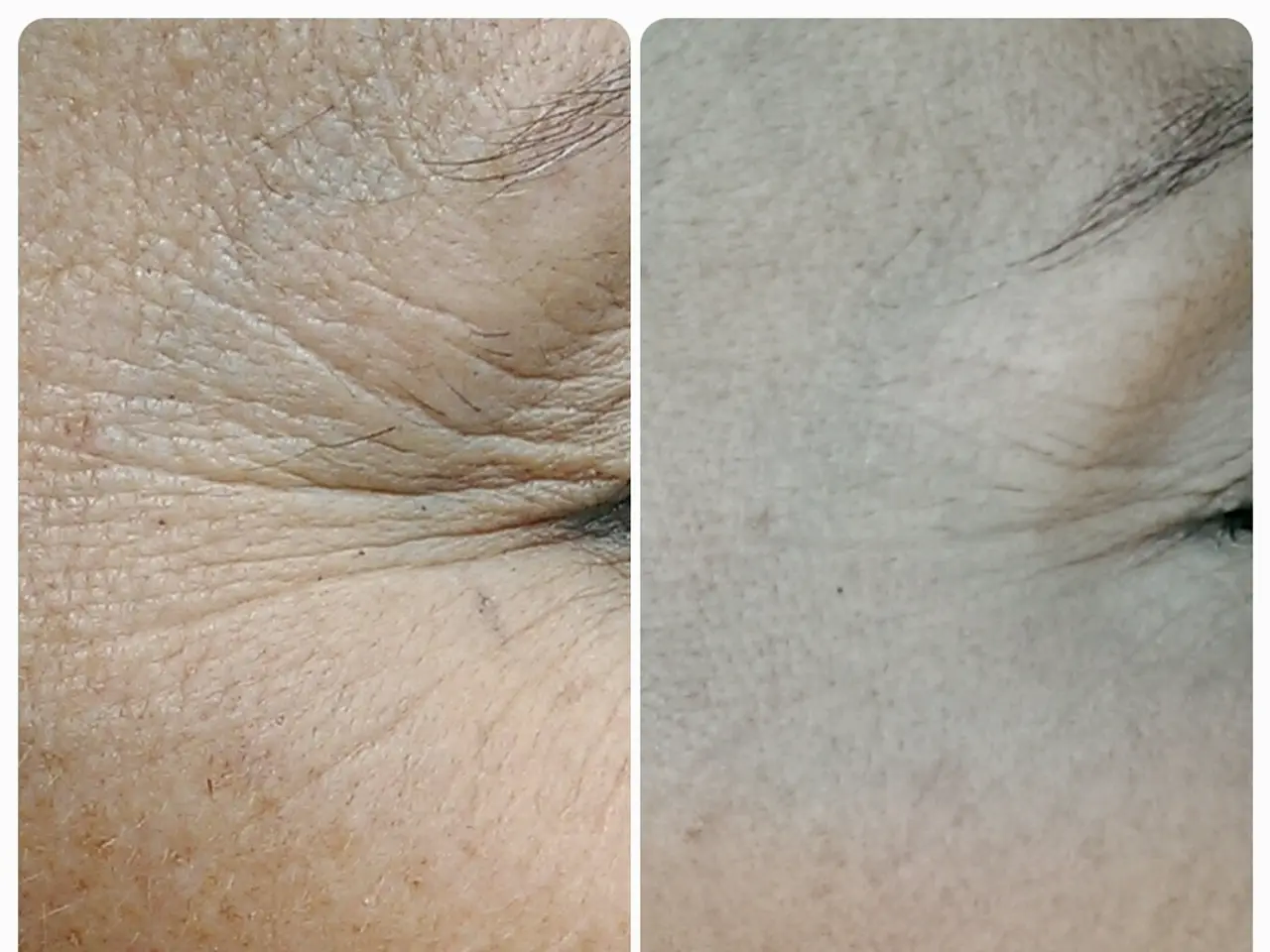'Examination of Skin Cancer Through Google Lens-Outcome Detailed'
In the realm of digital health, Google Lens and similar AI-powered skin analysis tools have been making waves as preliminary screening aids for various skin concerns. However, it's crucial to understand their limitations and position them correctly within the healthcare landscape.
Google Lens, while a powerful general visual recognition tool, is not specifically designed or validated for diagnosing skin conditions as accurately as traditional dermatological evaluations or specialized AI skin analysis apps. One such tool, dubbed as a "super advanced Google Lens for your face," demonstrated about 69% alignment with physician assessments in detecting 14 key skin concerns based on company-funded research with over 70,000 training images.
On the other hand, more specialized and clinically validated AI tools, like the SkinVision app, have shown higher accuracy. With a clinical sensitivity of around 87% overall and over 90% for malignant melanoma detection, and a specificity of about 80%, these tools are proving to approach the reliability of dermatologists in specific contexts.
Google Lens's general image recognition capabilities are powerful, but they are not tailored or clinically validated for medical diagnostics. Traditional dermatological evaluations by trained professionals remain the gold standard for accurate diagnosis, especially for serious conditions like skin cancer.
The key lies in positioning AI tools as preliminary screening aids rather than diagnostic replacements. Users must maintain realistic expectations about the capabilities and limitations of AI-powered health screening tools. They should seek professional medical advice for suspicious or potentially cancerous lesions.
Every day, roughly 27 million health-related skin searches occur, and Google continues refining their visual health search capabilities to improve accuracy and user experience. The quality and diversity of training data directly impact the system's accuracy across different skin types, lighting conditions, and photographic angles.
Social media amplification compounds these psychological effects, creating echo chambers where anecdotal results are treated as medical advice. Users must be cautious and consult reliable sources for accurate information.
In professional healthcare settings, AI skin analysis tools could offer promising applications due to the presence of professional oversight and medical context. Google Lens, for instance, compares photographs of skin against vast medical databases. Healthcare systems could integrate AI screening tools to help prioritize appointments, identifying cases that require urgent attention while reassuring patients with clearly benign conditions.
However, the technology will likely continue improving, but it cannot replace the nuanced evaluation that trained dermatologists provide. Google processes over 10 billion searches annually related to skin, hair, and nail conditions, with most searches involving vague descriptions like "weird brown spot on arm." Medical terminology can create unnecessary panic when taken out of context, emphasizing the need for clear and concise explanations.
As AI technology advances, it's essential to foster a balanced understanding of its capabilities and limitations. AI-powered tools can be valuable preliminary screening aids, but they should never replace professional medical evaluations.
Technology, such as Google Lens, while powerful in general visual recognition, is not specifically designed or clinically validated for accurate medical diagnoses, especially for serious conditions like skin cancer. In certain aspects, more specialized AI tools outperform Google Lens, with greater accuracy in detecting skin concerns. For instance, the SkinVision app has shown a clinical sensitivity of around 87% overall and over 90% for malignant melanoma detection, demonstrating an approach to reliability comparable to dermatologists in specific contexts. AI technology should be positioned as preliminary screening aids rather than diagnostic replacements, and users should seek professional medical advice for suspicious or potentially cancerous lesions.




